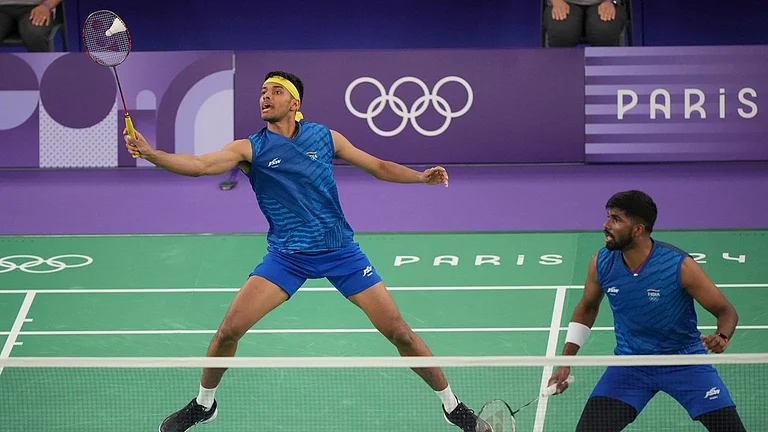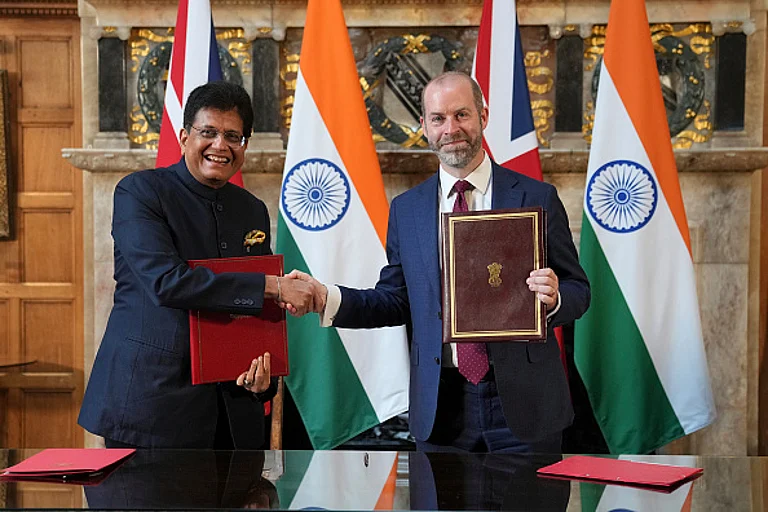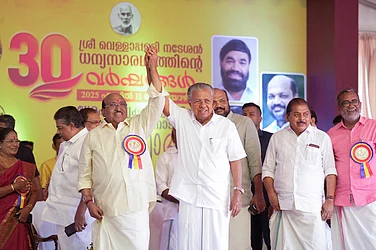The atrocity on Dalits in Gujarat’s Una had not only created a furore but set in motion a protest movement that gained passionate force by the day. Coupled with the vigilante injustice meted out by gau rakshaks, the situation was deemed combustible enough for Prime Minister Narendra Modi to speak out. On August 7, in an emotional appeal, he said at a public rally in Hyderabad: “If you want to attack, attack me. Stop attacking my Dalit brethren. If you have to shoot me, shoot me but not my Dalit brothers. This game should stop.”
The PM’s words put a temporary balm on the hurt feelings of Dalits. Officially, Dalit BJP leaders blame the opposition, especially the Congress, for presenting the Dalit protests as a revolt against Hindutva, with an eye on a large votebank. But in private, most of them exhibit another mood.
Educated Dalits within the party are increasingly disenchanted following the series of atrocities on the community in recent months. “Party leaders are not realising the negative consequences of Dalits and Muslims joining hands in protest against atrocities. It is going to be more lethal than any combination. It is suicidal for the BJP...,” says a Dalit BJP parliamentarian.
The party is trying put up a bold front. “By creating such a situation, the opposition, especially the Congress, is trying to reap benefits; they are playing votebank politics. The Congress is again trying its divide-and-rule policy to capture Dalit votes, but it won’t work. It wants to create an island of scheduled castes and use them as a votebank. This strategy won’t hurt BJP’s prospects. Dalits who are protesting have always been anti-BJP. Dalit voters at large have realised that the opposition’s strategy won’t work,” says Bizay Sonkar Shastri, a former MP and national spokesperson.
But such bravado fails to cheer up Dalit leaders, parliamentarians and workers in Delhi and other states. Dalit BJP workers in Uttar Pradesh rue the fact that central leaders are not providing a message of succour to the community. “Leaders need to come out of their comfort zone in Delhi; they are only working towards capturing Brahmin and other savarna votes. The minority...hardly get noticed in their frame of strategy,” says a Dalit leader who is part of the party’s national executive.
But is the BJP concerned enough about attacks on Dalits as to feel that it can harm the party’s prospects in the 2017-18 poll season? How do Dalit BJP leaders react to the tokenist attitude of the party?
Some Dalit BJP leaders rue the fact that even after so many gestures—like honouring Babasaheb Ambedkar in coins and stamps and other new schemes—the party and its leaders are being “branded anti-Dalit”. Leaders like Ramcharan Gujarati, a national executive member, strongly feels that in the backdrop of a fear that the opposition is trying to divide Dalits, BJP leaders should pull up their socks and reach out to the community in the rural areas in an “honest manner” and not just limit their activities to Delhi’s darbar politics.
Soon after the Una incident, there was a kneejerk reaction. As a damage control measure, the party rushed four sitting Dalit MPs of Gujarat—Mahant Shambhuprasadji Tundiya, Kirit Premjibhai Solanki, Mansukhbhai Dhanjibhai Vasava and Mansukh L. Mandaviya—to the state to reach out to Dalits. Two weeks on, they are still in Gujarat—while a Dalit protest march hit headlines. Apparently, the internal assessment of the BJP is that the agitation won’t affect its poll prospects in UP, Punjab and Gujarat. But nobody dare ask party president Amit Shah how he plans to win these elections. When they claim that Modi’s image will turn the tide in the party’s favour, it smacks of overconfidence.
Dalits in Gujarat comprise about seven per cent of the population, in UP around 21 per cent and in Punjab around 32 per cent, with the community in Punjab being economically well-off. Dalits have never been traditional supporters of the BJP, but that changed after Modi, with his non-savarna symbolism, became the party’s face for the 2014 polls. Today, the BJP has the highest number of Dalit MPs—40 in the Lok Sabha and six in the Rajya Sabha.
But, when it comes to having Dalits as office-bearers, the BJP draws a blank. “If the party claims to be serious about Dalits, why is it that we have no representation as office-bearers despite the fact that as per the party constitution we are to have three SC/STs as office-bearers?” asks a leader. After Thawar Chand Gehlot became a Union minister, there is no scheduled caste representation amongst vice-presidents or general secretaries, joint general secretaries or secretaries. Amit Shah is yet to form his new team since he took charge in his second term as party president. Dalit leaders are hopeful of positive changes.

A grab of the shocking Una flogging that gripped the nation’s conscience
“But why do we have to wait for the day when a new team will be established in Amit Shah’s second term? Anil Jain and Arun Singh were brought in as general secretaries mid-term. So if there is political will, Dalits could also have had their share of the pie,” says a Dalit leader.
The Scheduled Caste Morcha president of the BJP, Dushyant Kumar Gautam, is confident that all issues will be addressed when Shah creates his new team. “The Congress is unnecessarily trying to create an anti-BJP atmosphere using Dalits. Of course, attacks on Dalits are a matter of serious concern but karta koi hai aur challan hamara kat-ta hai,” Gautam told Outlook.
But even amongst central BJP-appointed state prabharis (in-charge), there is only one Dalit as assistant in-charge. Every state has one state in-charge appointed from Delhi and under him one or more assistants. In Uttar Pradesh, there is one in-charge and five assistants. Of the five, only one is a SC, from the Khateek caste.
Dalit MPs and leaders are disillusioned over the party’s discriminatory attitude towards their community during the recent cabinet reshuffle and Rajya Sabha elections. From Uttar Pradesh, two Brahmins were picked—Mahendra Nath Pandey was accommodated as MoS, Human Resource Development, replacing Ramshankar Katheria (a Dalit), and Shiv Pratap Shukla, who is now in the Rajya Sabha. The party balanced Katheria’s removal by accommodating Krishna Raj, a Dalit from UP, as MoS, Women and Child Development.
But Dalit parliamentarians and local leaders face a tough time when they visit their constituencies. “People question us and we try to explain, but it is very tough on us,” says a MP. Ramesh Chandappa Jigajinagi, a Karnataka MP, is “personally pained” at what is happening with his Dalit brethren. “What is happening is votebank politics and I am personally hurt. They are troubling Dalits because of votebank politics. I am going to raise it in our SC/ST forum.”


























